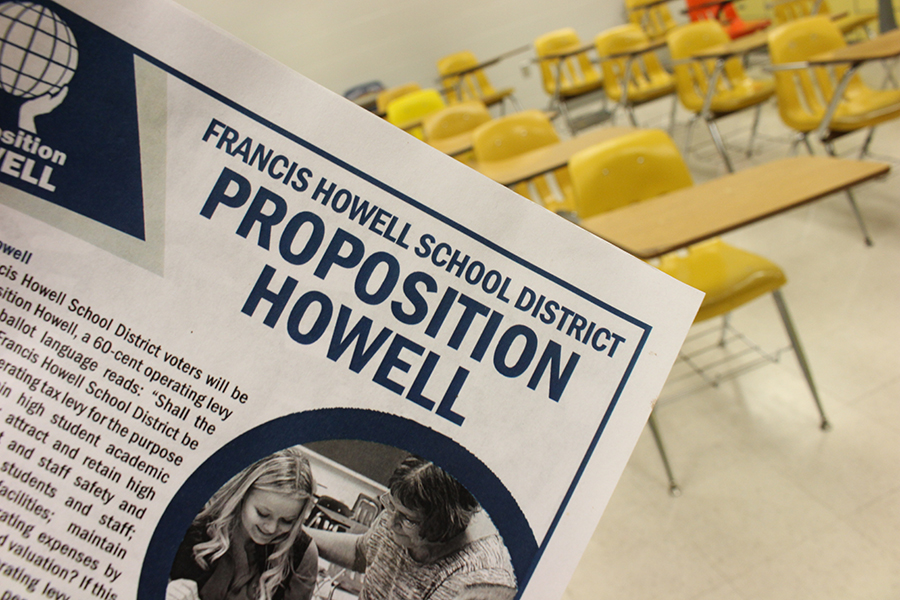FHSD Board of Education Weighs Budget Cuts
The board of education and administration work to find ways to allocate resources and funding to necessary programs and is going to have to decide where to make budget cuts
Credit to Riley McCrackin
Published: December 15, 2016
The FHSD community rejected the tax levy Proposition Howell on Nov. 8, which could have provided needed revenue for the district, leaving the district in a position where cuts need to be made. However, the ideas for how to maintain the level of support and education of the district are diverse. Whatever ends up happening, board members have all agreed that there are necessary cuts because the District needs to update technology and fully reinstate tutoring for struggling students, among other services. The board meets again tomorrow to discuss actions the District must take, but the most pressing decision that the board will make is whether or not to maintain “status quo” staffing or to cut positions.
“We’ve already cut the fat,” Renee Cope, school board vice president, said at a board meeting on Nov. 17. “We are down to the bone. Every cut will be hard. Since the failure of Proposition Y, FHSD has cut more than 90 positions and $12 million.”
The board has spent two meetings since the election trying to figure out what to cut and what needs to be put into place. The District must allocate its resources toward programs that it cannot put off any more, such as a refresh in technology and a fully-funded tutoring program. The hope was that if Prop Howell had passed, the district would have had enough resources to fund these two things, among others, and not have to make any cuts.
During the Nov. 18 board meeting and work session, the board requested that the superintendent and the rest of the administration come up with a status quo staffing plan, meaning no reduction in staffing. On Dec. 1, the administration presented three staffing options for the board to decide, and then the board gave direction to the administration as to what cuts need to be made.
The administration pushed for the number two option as a sort of goldilocks solution: not too hot, not too cold. This option would allow for the necessary returns, but also not cut so much that the district ends up with extra money and a hazardously low number of student services. Option two would also not cut any classroom teachers, and no staff in the district would lose their jobs.
“After much discussion and debate, our recommendation is option two: plan the 17-18 budget with the current projected deficit, use the typical positive variance between estimated and actual revenue to end the fiscal year with a balanced budget,” Superintendent Mary Hendricks-Harris said in the work session on Dec. 1.
The board felt that it was pertinent in this search to hear from district staff members, so they directed the administration on Nov. 18 to send out a district-wide survey. By the next meeting, around 25 percent responded with their opinions on how the District should go about cutting programs. The top responses include cuts to administration, professional development days and transportation. The most popular cut that has been talked about has been cuts to transportation.
“There is enough consensus on the board to look at transportation and alternative ways to provide it and efficiencies,” School Board President Mark Lafata said at a work session on Dec. 1.
The proposed list of cuts to transportation adds up to nearly $290,000. This would include implementing “walk zones” for students within one mile of the school, and cutting transportation for transition days of middle school and high school students. A walk zone would mean that students who live within a certain radius from school would have no school-provided transportation. The administration has informed the board that they would need to conduct a study of how and where to implement walk zones. The administration has asserted that they would not force transportation cuts on anyone who does not have a walkable route to school. For example, there would need to be a sidewalk to campus and students cannot cross major roads or highways.
“Every school district in St. Charles County has passed a tax levy or bond issue in the last two years, except for Francis Howell,” Deichmann said. “It’s been 12 years since the voters in the Francis Howell School District approved an increase in tax. So there are clearly two ways that school districts can deal with these funding challenges. Unfortunately, we are going to have to take the tougher route.”









![JV Girls Basketball Takes A Win To FZE On The First Game Of The Season [Photo Gallery]](https://FHNtoday.com/wp-content/uploads/2024/12/voccer10.24_kwallace-3-300x200.jpg)

![It's Time for the BOE to Respect Student Input [Editorial]](https://FHNtoday.com/wp-content/uploads/2024/11/Untitled_Artwork-1-300x173.png)


